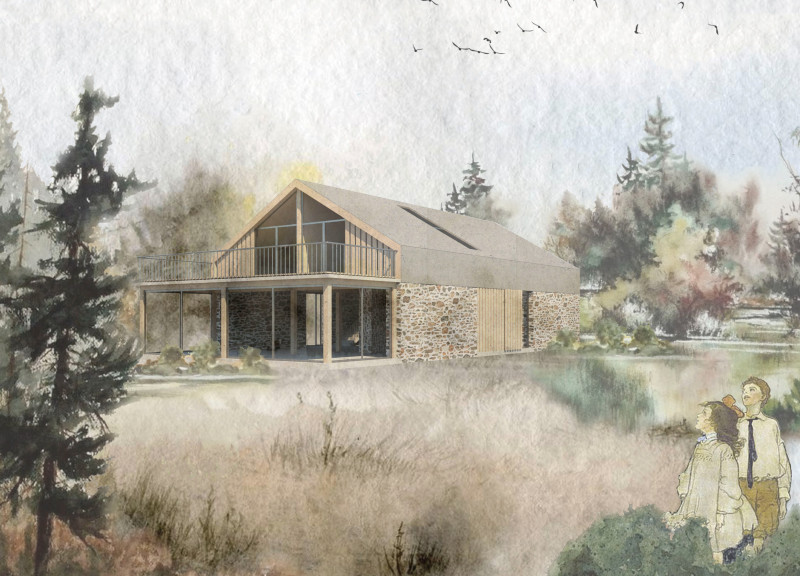5 key facts about this project
The project "Into The Wild" is located in Ozolini, designed specifically for tea-makers. It focuses on preserving the natural environment while providing a practical space for its users. The design concept revolves around the existing stone walls of the barn, which play a significant role in defining the space. By integrating the old with the new, it aims to create a setting that feels authentic and connected to its surroundings.
Preservation and Integration
The layout includes a concrete ground floor that expands the barn's original dimensions, combined with a prefabricated wooden structure that creates three separate guest huts. This arrangement offers privacy to visitors while ensuring they remain linked to nature. Each hut is angled to provide views of the landscape, reinforcing the idea that architecture can coexist harmoniously with the environment.
Spatial Dynamics
A key feature is the double-height enfilade that connects various guest rooms through a mezzanine. This approach enriches the experience of moving through the space, allowing for both community interaction and individual reflection. The use of existing wall openings simplifies circulation, ensuring easy access to all areas of the guest house, which enhances overall usability.
Functional Design Elements
Careful attention has been given to the tea-making workshop, which is positioned to maximize natural light and airflow. This is crucial for the tea-making process, as it relies on conditions that support quality. The workshop's close proximity to drying and packing areas aids in efficiency, showcasing how thoughtful layout can enhance practical operations.
Materiality and Aesthetic Cohesion
The materials used in the project contribute to a clear and functional aesthetic. The roof features a matt sheet metal cover, which provides longevity without affecting the visual appeal of the structure. Wooden elements contrast with the stone walls, creating a welcoming atmosphere. Thermal insulation and a vapor barrier help with energy efficiency, making the indoor environment comfortable throughout the year.
A notable aspect of the design is how it combines old and new materials. This blend reflects a respect for the historic context while also embracing modern needs. The relationship between the built environment and the landscape emphasizes a commitment to creating spaces that are not only useful but also respect their geographical setting.


























